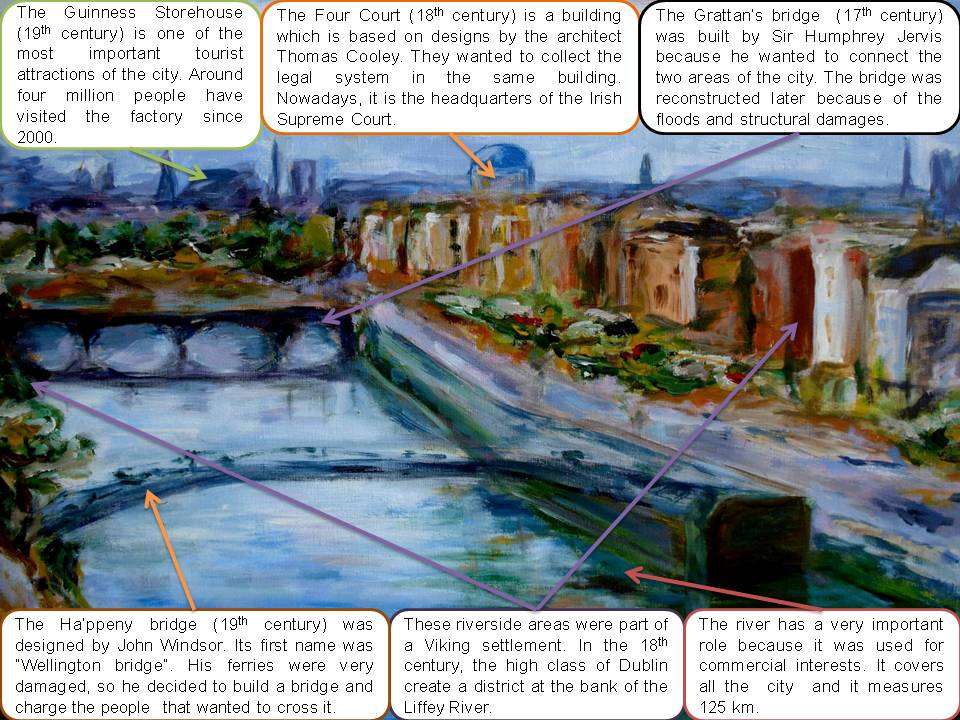DUBLIN (Marisa Ramos Ochoa, 2003)
The painting we are going to analyze is an oil canvas that represents the city of Dublin in 2003. Concretely, the canvas shows a part of the Liffey River with two bridges (Ha’penny Bridge and Grattan Bridge) and its surrounding area. It was painted by Marisa Ramos Ochoa which lived in Dublin for two years. In her blog, she expresses her love for this city.
Returning to the image, we can see how Marisa Ramos Ochoa is using a chromatic variety of blue and green tones to paint this oil canvas. Because of the lines and the colors, this is a neoexpressionist painting. This movement was born in Germany in the 80’s and it extends all over Europe and USA. At the top of the image, we can observe some important buildings of the city like the Four Court and the Guinness Storehouse. The Liffey River with the Ha’penny Bridge and the Grattan Bridge is the focal point of the canvas. This is because, since the city was founded, the river has an important role because of commercial reasons. On the right side, there are some houses that correspond with the North zone.
Although the historical centre of the city cannot be seen in the image, it is situated on the left side near the Wood Quay. The author of the painting has underlined the big variety of trees and green spaces that the city has. In the image, we can see it in Ormond Quay Lower at the right, some trees in Wood Quay and near the Grattan Bridge.
Dublin is situated in the mouth of the Liffey River in Ireland and it is the capital of this country since the Middle Ages. It was founded by the Vikings because of commercial and military reasons. Due to the population growth of the city (nowadays in Dublin around 1 million people live), we can deduce that the antique and close to the river area shows an irregular plan with narrow streets and without an order, while in the periphery neighborhoods, there are long streets, avenues and a lot of green spaces.
In Dublin, people usually live around the historical quarter, so the city is a nucleated settlement. There are not very high buildings and this is one of the most important characteristics of the city. The majority of the houses in the city centre are built in a Georgian style, which belongs to the Neoclassic Architecture. These houses are made out of wood or stone, they have a hipped roof and the main gate has a high lintel.
The river divides the city in two parts: the North part, associated with the working class; and the South part, related with the Middle and High class. The separation of the river is not only geographical. Moreover this division influences the architecture and the way of live. In addition, in the North zone, some of the places of touristic attractions are situated around O’Connell Street which is the most important street of this part of the city. In the South zone, we can find most of the touristic attractions of the city like the Guinness Storehouse, the Trinity College or the Temple Bar neighborhood. In this edge of the river the historic centre of the city is situated and because of this the houses are more ancient.
According to the Chamber of Deputies of Ireland, the country has a little economy and the principal economical activities are trade and industry. Ireland is an exporting country, but nowadays the interior consume has increased. Since Dublin was created, it has an important role because it is the motor of the country because of its location.
Paula Luque García

